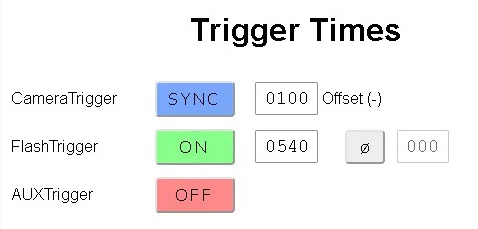
One of the advanced features of the dropController is the Camera Trigger SYNC Mode. SYNC mode automatically syncs the shutter trigger time to the flash trigger time. This allows you to focus on the flash trigger time without worrying about the shutter trigger. SYNC mode also allows for shorter shutter speeds than used by traditional high speed photography methods. There are some caveats though;
- you need to know your cameras shutter lag time, and
- the flash trigger time must be greater than the shutter lag time.
To use SYNC mode simple select SYNC and enter the shutter lag time in the Offset text box.
Shutter Lag Time
Shutter lag is the time it takes for the camera to fully open the shutter. Each camera make and model is different and the time can be anywhere from 40ms to 50ms to 100ms+. Sometimes the shutter lag time is published online and sometimes you need to work it out for yourself.
How SYNC Mode works
In SYNC mode, the Camera Trigger time is calculated by subtracting the SYNC Offset time from the Flash Trigger time. To show how SYNC Mode works it is probably better to use an example. My example camera has a shutter lag of 100ms and this is used for the SYNC Offset time.

I have the Camera Trigger set to SYNC and the Flash Trigger is turned ON.
The Flash Trigger time set to 540ms and the SYNC Offset time (shutter lag time) is -100ms.
Since the Camera Trigger time is calculated by subtracting the Offset time from the Flash Trigger time, the shutter will open at 440ms (540ms – 100ms). Once you have set the SYNC Offset time all you need do is to set an appropriate shutter speed on the camera.
Depending on the camera model, using the exact shutter lag time may not work fully (can lead to partial open shutter) and it is often good practice to add a few microseconds. For example, add an extra 5ms to ensure the shutter is fully open.
SYNC Mode allows you to set the Camera Trigger and forget it. The only thing you need to take care of is the shutter speed on the camera.
Caveat #2 The flash trigger time must be greater than the shutter lag time.
The shutter trigger time is derived by subtracting the Offset time from the flash trigger time. Normally things take care of themselves but, when the flash trigger time is fairly short the Offset time can take the Camera Trigger time below zero. When this happens the dropController automatically sets the Camera Trigger time to zero.
For example, if the Flash Trigger time is set to 75ms and the Offset is -100ms. The Camera Trigger world be -25ms (75-100) and this cannot be. The Camera Trigger value cannot go below zero and to stop bad things happening the dropController sets the shutter trigger to 0. This can catch you out if you are not paying attention 🙂
If you encounter this issue, either switch to a different Camera Trigger Mode or add a base value, such as 1000ms, to all start times.
What Shutter Speed To Use In SYNC Mode
The environment you are working in (how light/dark) and the aperture on the camera are the main factors. The lighter the room the quicker the shutter speed should be. The smaller the aperture the longer the shutter speed can be. The key thing to remember, and all that really matters, is that the shutter is fully open when the flash fires.
When using SYNC Mode I normally have a shutter speed of around 1/60th. 1/60th of a second is about 16ms of open shutter time and means the SYNC Offset time has to be pretty close but still has some margin of error. I need to fire the flash within these 16 milliseconds.
How To Use the dropController To Find The Shutter Lag Time
If you do not know the shutter lag time of your camera you can use the dropController to find it.
In the below example I am using my trusty Canon 40D and a Yongnuo YN560-III flash.
The camera and a flash are connected to the dropController. No need to connect valves.
The camera is set up to take a basic shot. In this case I am using a little Japanese monk.
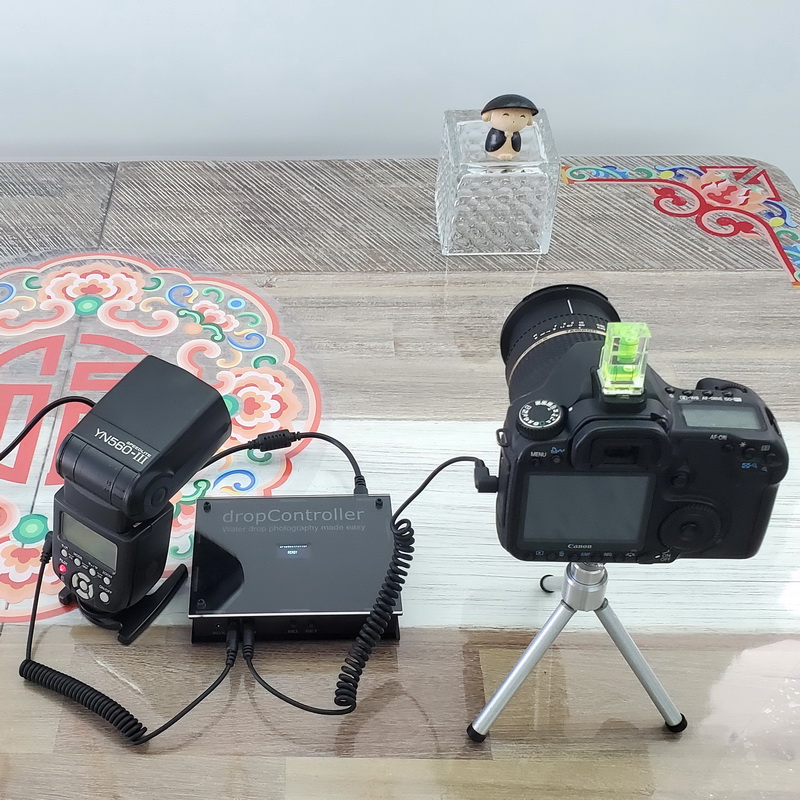
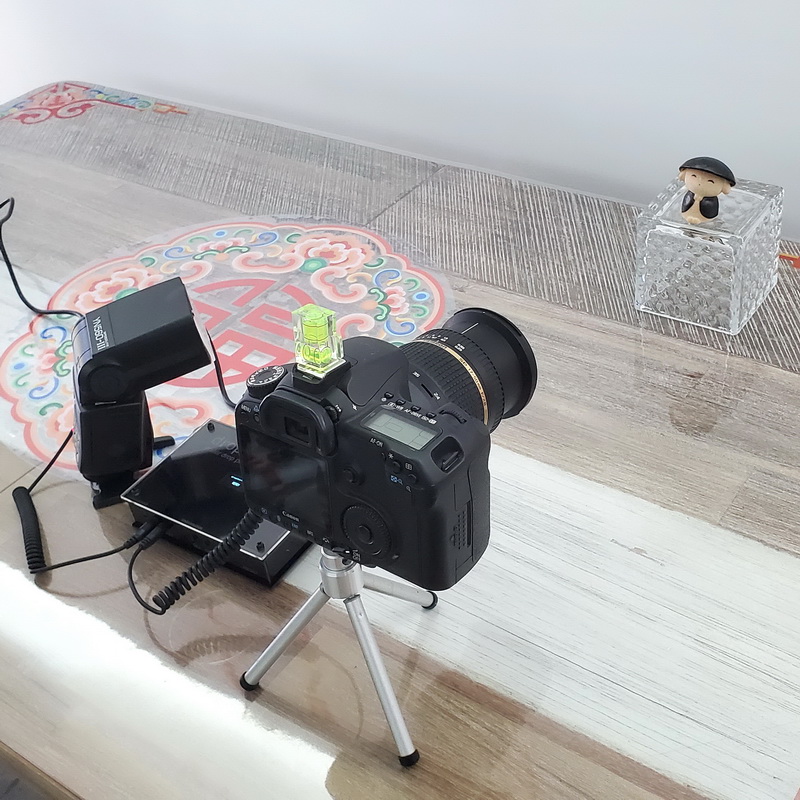
The camera is set for manual exposure and the lens is in manual focus mode. The aperture is f16, and the shutter is 1/60th. The flash is set to 128 power (but this is not really important).
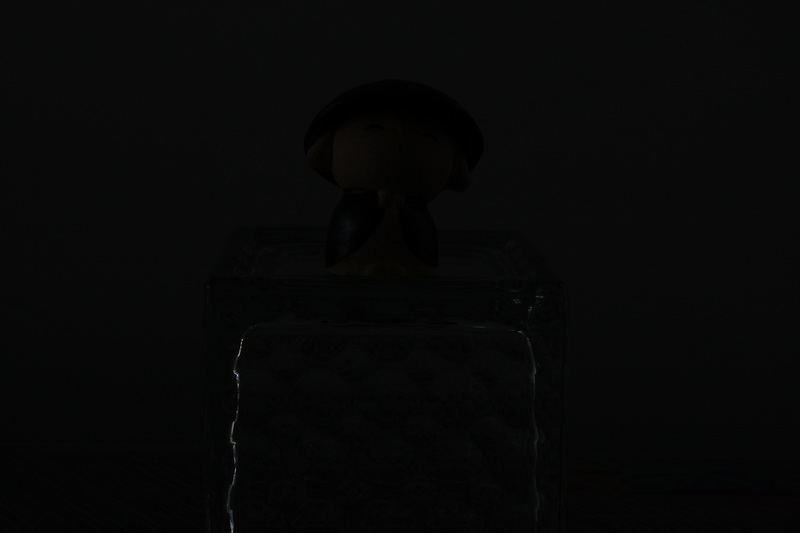
Take a shot without the flash.
The image should be dark, very under exposed
On the dropController:
Drop 1 is turned OFF
Camera Trigger is ON with a Start Time of 100ms, no delta.
Flash Trigger is ON with a Start Time of 100ms and a +delta of 10ms.
AUX is OFF
Loop Mode is set to BUTTON
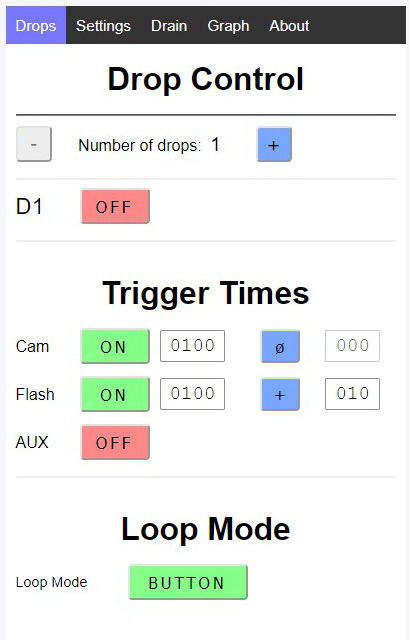
Click the START button to open the Loop Page.
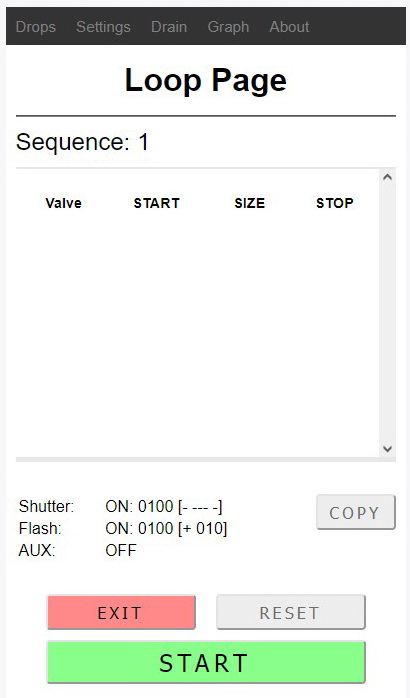
Make sure the flash and camera haven’t gone to sleep and click START and keep clicking start until you see the flash in the shot.
Take you time, allow the camera and flash time to cycle before taking the next shot.
Every time you take a shot the Flash Trigger time will increase by 10ms:
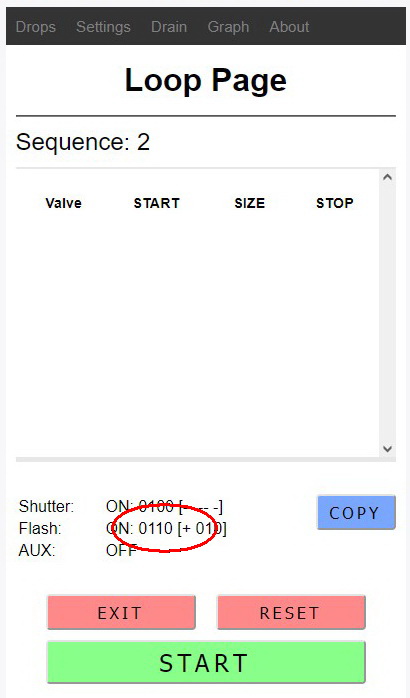
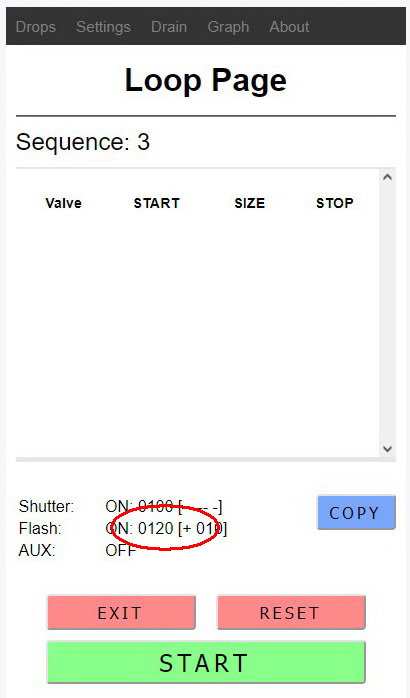
Keep a note of the Flash Trigger time and remember the time displayed is the time used for the next shot not the previous one. If the Flash Trigger time shows 120ms, the time of the last shot was 110ms.
At first, unless you have a really high end, extremely fast camera, you will get dark images. Keep going until you see the flash.
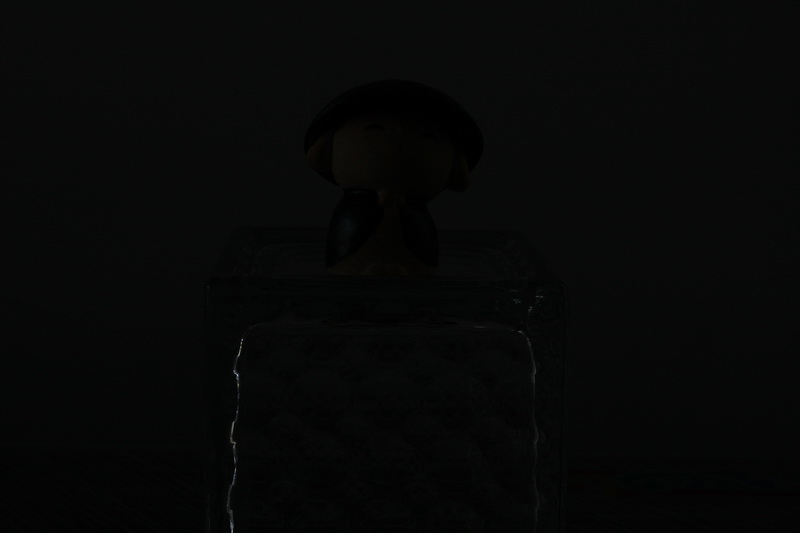


At some point you should get images that have the flash. When you do take a note of the Flash Start time.
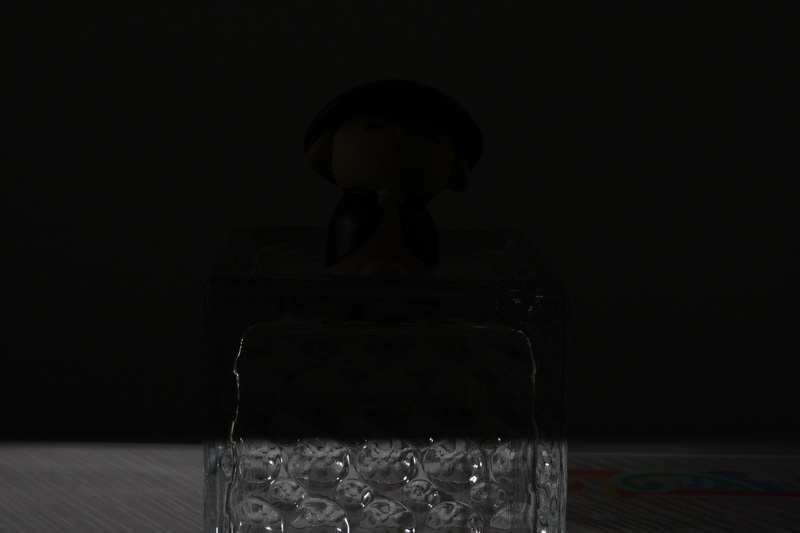
You may or may not get a partially exposed image.
I got one with a Flash Trigger time of 230ms.
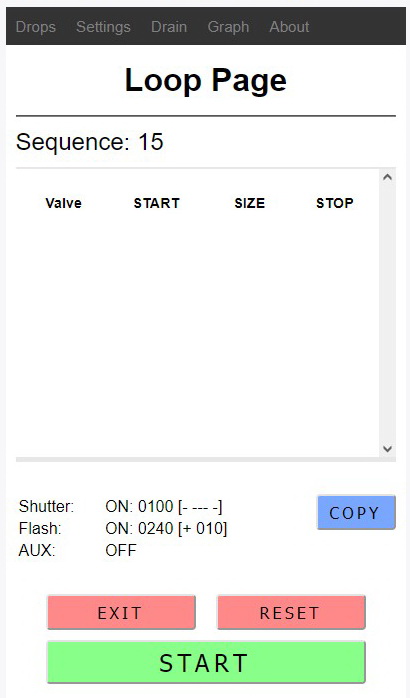
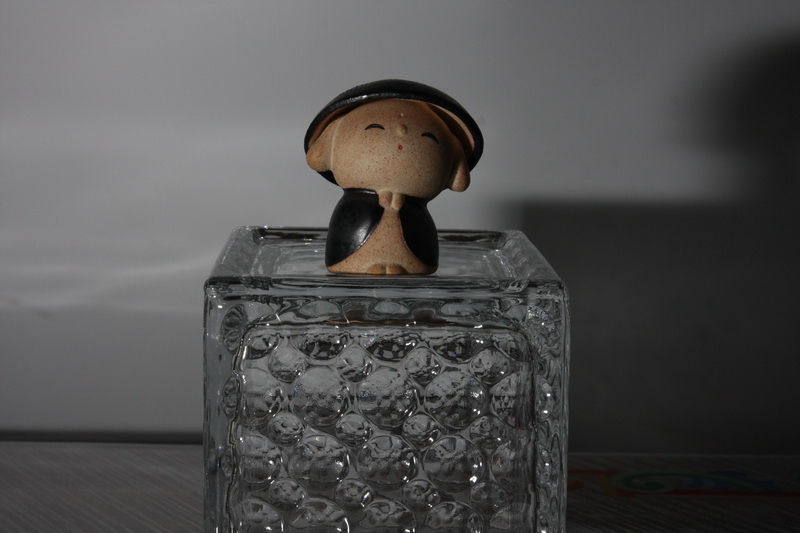
I got the first fully exposed image with a Flash trigger time of 240ms. remember, the time shown is for the next sequence.
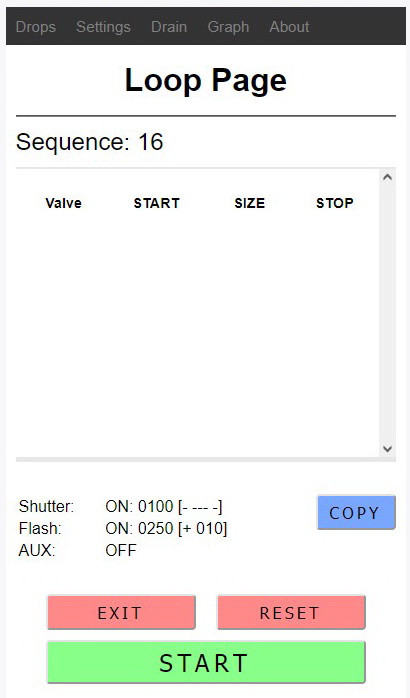
Because I started the trigger times at 100ms I need to remove 100ms from the times, this means the shutter starts to open at about (230-100) 130ms, and is fully open at (240ms-100ms) 140ms (it’s probably open a little bit earlier than this).
I can use 140ms as the shutter lag time or I can fine tune buy using a smaller delta value. With a shutter speed of 1/60 I can use 140ms. With a shutter speed of 1/60th the shutter is open for around 16ms and the flash fired somewhere within this period. For faster shutter speeds I would need to fine tune the shutter lag time. For example, a shutter speed of 1/125 is only 8ms and it could be 140ms is outside of this time.
To double check that 140ms works I changed the Camera trigger mode to SYNC and entered an Offset of -140ms. Off course, I need to make sure the Flash Trigger time is greater than 140 so I changed it to 200ms.
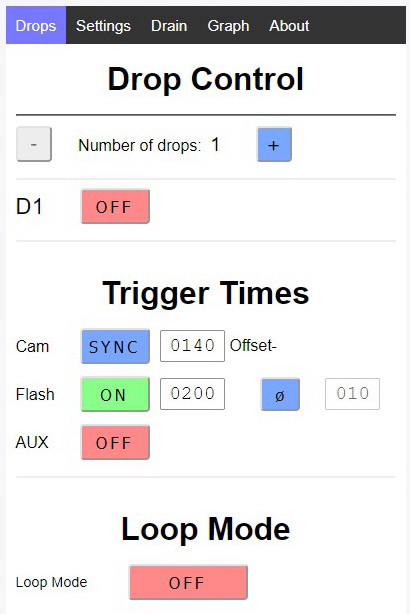

Success! the shot has the flash.
If you want to use a faster shutter speed, you can fine tune the shutter lag time by using a smaller delta value.
Leave the Camera Trigger at 100ms and change the Flash Trigger time to something just before you saw the first image with the flash. For me this is around 220ms, for you it will be different. Changing the Flash Trigger helps reduce the number of redundant shots.
Change the delta value on the flash trigger to a lower value, 2ms or 3ms will be good and re-run the sequence.
The faster the shutter speed the more precise the shutter lag time has to be.